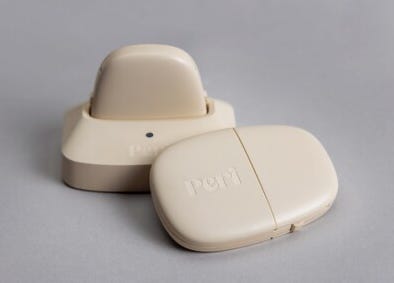This wearable detects perimenopause: IdentifyHer launches 'Peri'
The CES-honoured device uses biosensing and AI to help women track and understand the physical changes of perimenopause
When Heidi Davis began working in women’s health data, one statistic stood out: nearly three-quarters of women experience life-disrupting symptoms during perimenopause, yet few receive meaningful support.
“Perimenopause is treated like a mystery or an inevitability that women simply have to power through,” says Davis, CEO and co-founder of IdentifyHer. “We reject this. Women deserve real data, validation, and support during this profoundly overlooked stage of life.”
Now, Davis and her team have launched Peri, which they’ve billed as the world’s first wearable designed specifically to detect and interpret symptoms of perimenopause.
Developed by IdentifyHer and now available for U.S. pre-order ahead of its December launch, Peri turns the often confusing and poorly understood changes during perimenopause into personalized insights women can actually use.
Honored as a 2025 CES Innovation Award winner in Digital Health, the AI-driven device brings clarity to a life stage experienced by more than a billion women worldwide.
The perimenopause gap
For most women, perimenopause begins in their early to mid-40s and can last up to 10 years. It’s a period marked by hormonal shifts that can cause wide-ranging symptoms — hot flashes, sleep disruption, anxiety, night sweats and mood changes among them. Despite its scale, it remains one of the least understood and least supported stages of female health.
IdentifyHer’s research suggests that 70% of women who seek clinical help for perimenopausal symptoms receive none, often because clinicians lack training and diagnostic tools. Eighty-four percent report not being believed. As a result, most women rely on self-reporting and trial-and-error management, a process that can be frustrating and unreliable.
Tracking symptoms, not assumptions
Peri is designed to close that information gap. The discreet wearable uses proprietary biosensing technology and AI-based analytics to track physiological signals linked to perimenopausal symptoms. It identifies patterns associated with anxiety, hot flashes, night sweats and sleep disturbances, and provides tailored feedback through the IdentifyHer app.
It also goes further, mapping how symptoms interact across the menstrual cycle and change over time.
“Heidi and I first launched IdentifyHer with the mission to support women’s long-term health, and immediately recognized that to do this, we need to address the gap in perimenopause symptom data,” says Dr Donal O’Gorman, IdentifyHer’s COO and co-founder.
“Our goal with Peri is to demystify perimenopause, but more importantly, to empower and reassure women they are not alone in what they’re feeling and it is possible to take proactive action towards their health.”
By helping women articulate what’s happening in their bodies and share relevant data with healthcare providers, Peri aims to support better-informed decisions and more constructive clinical conversations. Users can also choose how and when to share their data — an increasingly critical issue as health tracking becomes more personal.
Building an evidence base
IdentifyHer, founded in 2021 by Davis and O’Gorman — both scientists turned entrepreneurs — is part of a growing wave of companies tackling the gender health data gap. Its approach combines biosensing, machine learning and behavioural science to generate real-world insights that can inform both personal health and research.
Priced at $449 and eligible for FSA/HSA reimbursement, Peri sits at the higher end of the consumer health market. While most wearables track general wellbeing metrics such as heart rate or activity, Peri is the first to focus on the physiological patterns unique to perimenopause. That could make it valuable not only for users, but for building datasets that shed light on the links between perimenopause and longer-term health risks such as cardiovascular disease, osteoporosis and cognitive decline.




